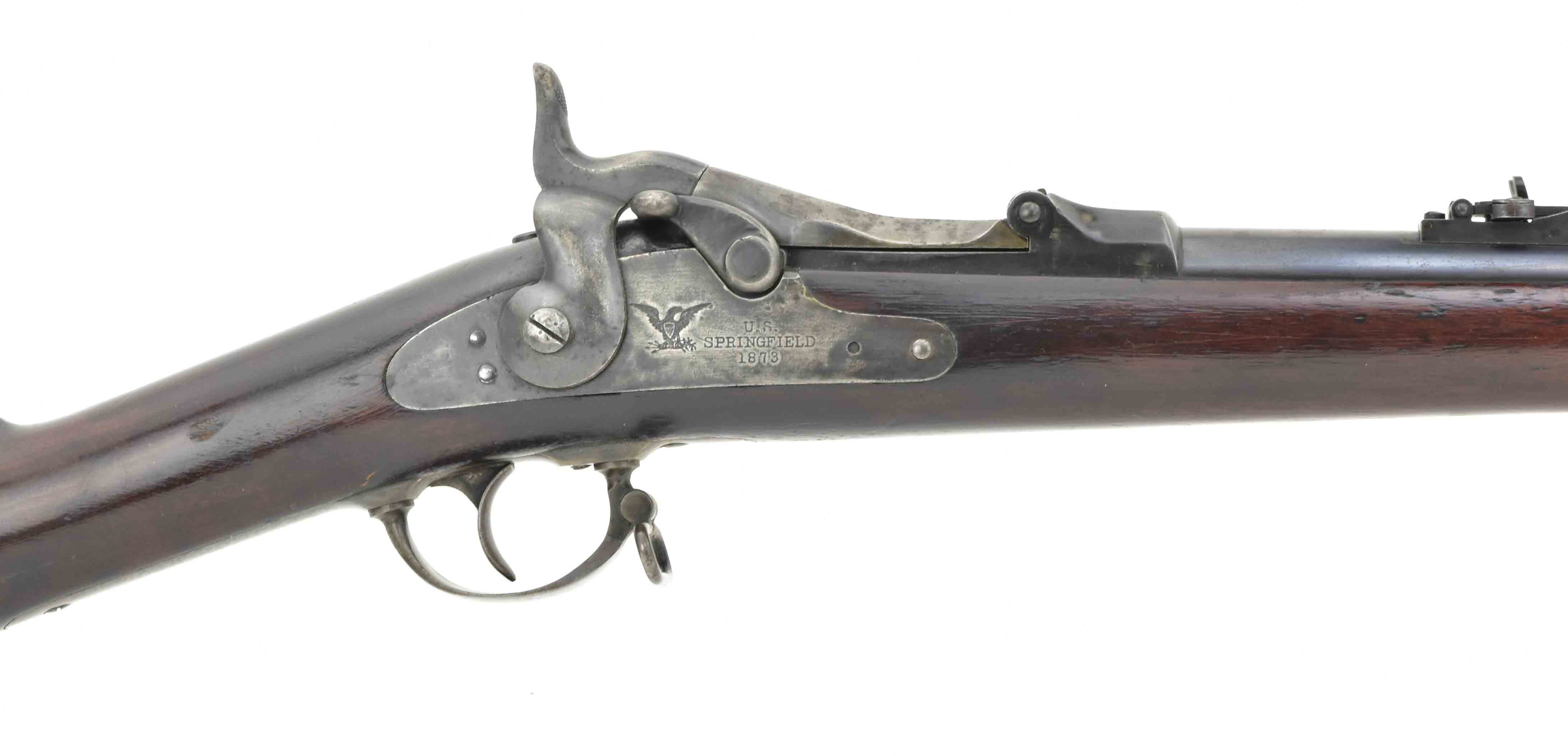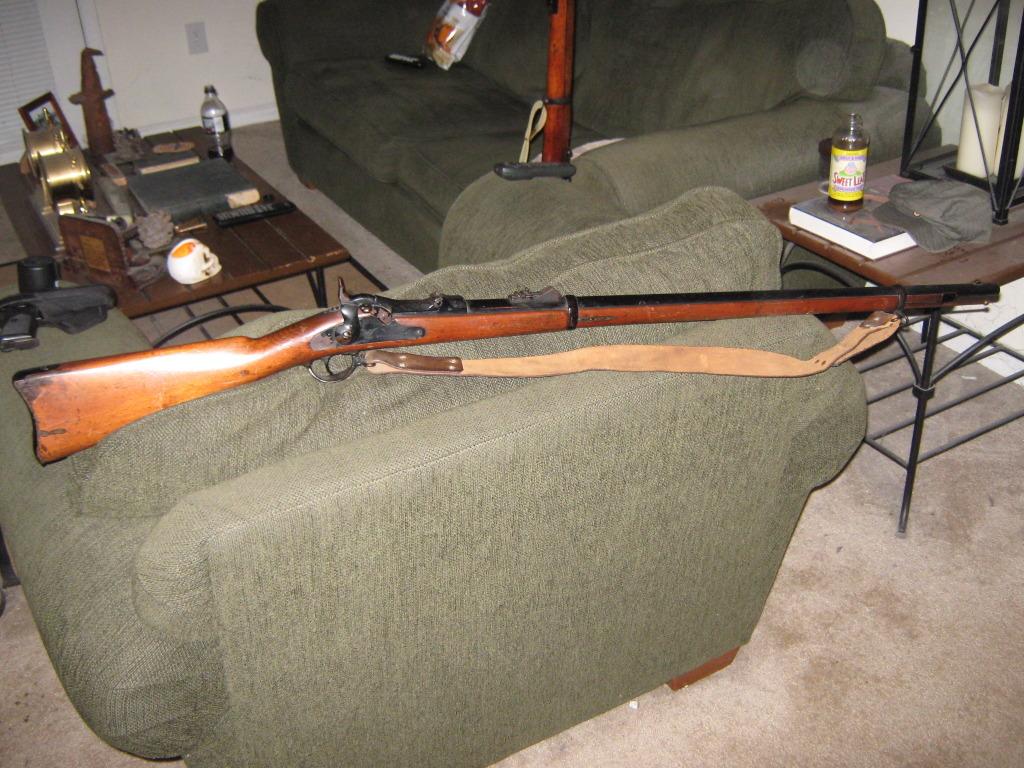
45” caliber, contained 70 grains of black powder and a bullet weighing 405 grains. 45” and saw Springfield Armory producing the entire weapon from new parts. The resulting Model 1873 had the caliber reduced to. Major changes took place in 1873, based on the recommendations of a board of Ordnance officers under Brig.

The Model 1870 was similar to the 1868, except for a few minor modifications such as a shortened receiver and a changed rear sight. Surplus Civil War parts continued to be used on the remainder of the weapon. 50”, but new barrels were made rather than relining the old muzzle-loader barrels. Benton, the new commanding officer of Springfield Armory, further improvements were made. In 1868 and again in 1870, under the influence of Major J.G. Powell's detachment inflicted several hundred casualties, while sustaining only three themselves, demonstrating conclusively the value of their new breech-loaders. Here 28 soldiers and four civilians under the command of Major Powell held off repeated attacks by Chief Red Cloud's vastly superior force of Oglala Sioux. The model of 1866 received its baptism of fire on Jin the celebrated "Wagon Box Fight" near Fort Phil Kearney in the Wyoming Territory. Cartridge was center fire instead of rim fire. The breech mechanism and extraction system were improved, and the new.

This was accomplished by reaming out the bore and brazing in a new. 58” caliber was considered too large, so in 1866 the arm was redesigned and converted to. The basic "trapdoor" design lasted more than 25 years, but many gradual modifications resulted in steady improvement of the weapon. This "Allin conversion" consisted primarily of removing the top portion of the rear of the barrel and replacing it with a hinged breech block, which soon was nicknamed the "trap door." Five thousand Model 1865 conversions were produced at Springfield, utilizing the older rifle muskets and retaining their. Allin, the Master Armorer of Springfield Armory. The system that was selected was a relatively simple one developed by Erskine S. Instead, the Ordnance Department was directed to convert the existing muzzle-loaders to a standard breech-loading arm. In 1865 the US faced the possibility of war with one of these powers: France had installed a puppet government in Mexico while the US was distracted by the Civil War, and many Americans believed war would be necessary to dislodge the French-backed Emperor Maximilian.Īt the same time, the usual postwar mood of retrenchment had set in and a penny-pinching administration was reluctant to scrap large numbers of usable weapons and initiate a costly replacement program. Also, it was relatively easy to ram more than one load into a muzzle-loader by mistake.īecause of these glaring defects, most European armies had already adopted breechloading arms. As a result, soldiers would frequently fail to ram the bullet fully down on the powder, so that the weapon burst on firing. Wartime experience had shown that muzzle-loaders were becoming obsolete: it was difficult to load them in other than a standing position, and as they became fouled from repeated firing, it became increasingly difficult to ram a cartridge home. 58” caliber rifle muskets of the Springfield pattern, most of which were still serviceable. Just because you have a cut down doesn't mean it doesn't have a lot of history behind it or make it less of a shooter.At the end of the Civil War the US Government had on hand over one million single-shot, muzzle-loading. These guns were an easy choice for anyone who wasn't wealthy and during this time period very few folks had a lot of spending money available.Įnsure that it's safe to fire, stick to safe pressure limit ammunition and shoot/enjoy these cool guns. Certainly lever guns were the king of fast shooting but a lever gun in big caliber like. Initially these weren't purchased for collecting purposes, they were usually bought to use. The carbine versions were inexpensive, lightweight (for the time), compact/easy to carry and of course powerful enough to handle anything in North America. The carbine, either factory or cut down, became extremely popular guns for folks hunting big game long ago. Nobody wanted to carry around the rifle version because of the length and weight.

There were lots of these cut down into carbines once they were sold as surplus.


 0 kommentar(er)
0 kommentar(er)
